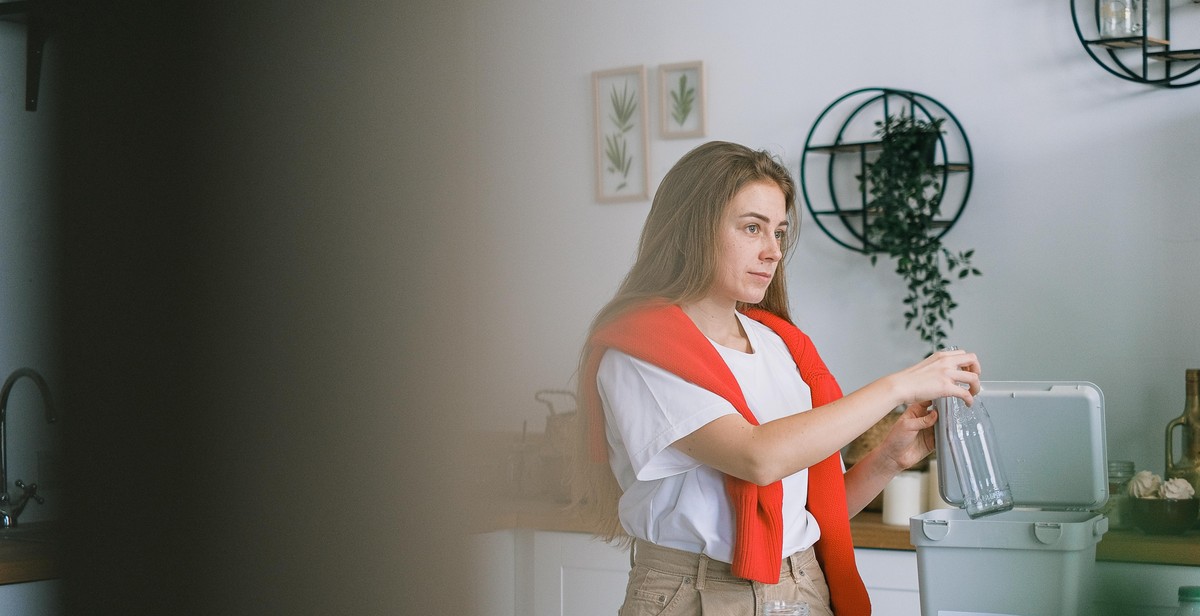The Importance of Sustainable Living
Sustainable living is becoming increasingly important in today’s world as environmental issues continue to escalate. One of the most significant contributors to environmental degradation is human activities, particularly in urban areas. With the world’s population projected to reach 9.7 billion by 2050, it’s essential to adopt eco-friendly practices to reduce our impact on the planet.
Creating a sustainable apartment is an excellent way to contribute to a greener world. By implementing eco-friendly practices, you can reduce your carbon footprint, save money on utilities, and create a healthier living environment for yourself and your family.
The Benefits of Sustainable Living
Aside from the environmental benefits, sustainable living has numerous advantages. By reducing your energy consumption, you can save money on your utility bills. Additionally, sustainable living practices promote a healthier lifestyle by minimizing exposure to harmful chemicals and pollutants.
Moreover, creating a sustainable apartment can increase the value of your property. As more people become environmentally conscious, eco-friendly homes are becoming more in demand and more valuable in the real estate market.
How to Create a Sustainable Apartment
Creating a sustainable apartment is easy and can be done in many ways. From using energy-efficient appliances to reducing water consumption, there are numerous eco-friendly practices you can implement. In this article, we will explore some of the best practices for creating a sustainable apartment and living a greener lifestyle.
Reducing Energy Consumption
Reducing energy consumption is one of the most important steps towards creating a sustainable apartment. By making a few simple changes in your daily routine, you can significantly reduce your energy bills and carbon footprint.
Using Energy-Efficient Appliances
One of the easiest ways to reduce energy consumption is by using energy-efficient appliances. These appliances are designed to use less energy than their traditional counterparts, which can help you save money on your energy bills while also reducing your carbon footprint. When shopping for appliances, look for the ENERGY STAR label, which indicates that the appliance meets strict energy efficiency guidelines set by the U.S. Environmental Protection Agency.
Switching to LED Light Bulbs
Another simple way to reduce energy consumption is by switching to LED light bulbs. LED bulbs use up to 80% less energy than traditional incandescent bulbs, and they last up to 25 times longer. This means that you’ll save money on your energy bills while also reducing the amount of waste generated by replacing burnt-out light bulbs. Additionally, LED bulbs don’t emit as much heat as traditional incandescent bulbs, which means your apartment will stay cooler during the summer months.
Unplugging Electronics When Not in Use
Many electronics continue to use energy even when they’re turned off or in standby mode. This is known as standby power, or “vampire power.” To reduce your energy consumption, make sure to unplug electronics when they’re not in use. This includes items like your computer, TV, and phone charger. You can also use power strips to make it easier to turn off multiple electronics at once.
| Tip | Description |
|---|---|
| Set your thermostat | Set your thermostat to 68°F in the winter and 78°F in the summer to save energy and money. |
| Air dry your clothes | Air dry your clothes instead of using a dryer to save energy and reduce wear and tear on your clothes. |
| Use a low-flow showerhead | Use a low-flow showerhead to save water and energy. |
By following these simple tips, you can reduce your energy consumption and create a more sustainable apartment. Not only will you save money on your energy bills, but you’ll also be doing your part to protect the environment.
Water Conservation
Water is a precious resource, and every drop counts. Conserving water not only helps the environment but also saves money on utility bills. Here are some eco-friendly practices for water conservation in your apartment:
Fixing Leaks and Drips
Dripping faucets and leaky pipes waste a significant amount of water. According to the Environmental Protection Agency (EPA), a leaky faucet can waste up to 3,000 gallons of water per year. Fixing leaks and drips is a simple and cost-effective way to conserve water. Check all faucets, pipes, and toilets regularly for leaks and repair them promptly.
Installing Low-Flow Showerheads and Faucets
Low-flow showerheads and faucets use less water than traditional fixtures without compromising water pressure. A low-flow showerhead can reduce water usage by up to 40%, which can significantly lower your water bill. Installing these fixtures is an easy and affordable way to conserve water in your apartment.
Collecting Rainwater for Plants
Collecting rainwater is an excellent way to conserve water and nourish your plants. Set up a rain barrel or a container to collect rainwater from your apartment’s roof or balcony. Use the collected water to water your plants and reduce your dependence on tap water. Make sure to check with your landlord or property management to ensure that collecting rainwater is allowed in your building.
| Environmental Benefits | Financial Benefits |
|---|---|
|
|

Waste Reduction
Waste reduction is an important aspect of sustainable living in an apartment. By reducing waste, we can minimize the amount of resources consumed and prevent pollution. Here are some eco-friendly practices for waste reduction:
Composting Food Scraps
Composting is a natural process of decomposing organic matter into nutrient-rich soil. It’s an effective way to reduce food waste and create a sustainable source of fertilizer for plants. To start composting in your apartment, you can use a compost bin or a worm bin. Place your food scraps, such as fruit and vegetable peels, coffee grounds, and eggshells, into the bin. Mix them with dry materials, such as shredded paper and leaves, and add water to keep the mixture moist. Turn the compost regularly and avoid adding meat, dairy, and oily foods.
Recycling Plastic, Glass, and Paper
Recycling is a crucial part of waste reduction. It helps to conserve resources and reduce the amount of waste sent to landfills. In your apartment, you can recycle plastic, glass, and paper products. Check with your local recycling center to see what materials they accept and how to properly sort them. Rinse out your containers and remove any non-recyclable materials, such as plastic bags or food residue. You can also consider using reusable containers and bags instead of disposable ones.
Avoiding Single-Use Products
Single-use products, such as plastic utensils, straws, and water bottles, contribute to the growing amount of waste in our environment. To reduce waste, avoid using single-use products as much as possible. Instead, opt for reusable products, such as metal or bamboo utensils, glass or metal straws, and a refillable water bottle. You can also bring your own reusable bags when shopping to avoid using plastic bags.
| Benefits | Explanation |
|---|---|
| Conserves resources | By reducing waste, we can minimize the amount of resources consumed, such as water, energy, and raw materials. |
| Prevents pollution | Reducing waste helps to prevent pollution of our air, water, and soil. |
| Creates sustainable practices | By composting and recycling, we can create a sustainable source of fertilizer and conserve resources for future generations. |
By implementing these waste reduction practices in your apartment, you can contribute to a more sustainable and eco-friendly lifestyle.
Eco-Friendly Materials
Choosing sustainable furniture and decor is an essential aspect of creating a sustainable apartment. Opting for eco-friendly materials not only helps the environment but also ensures that your home is free from harmful chemicals.
Choosing Sustainable Furniture and Decor
When selecting furniture, choose pieces made from sustainable materials such as bamboo, reclaimed wood, or recycled plastic. These materials are eco-friendly as they are renewable, require less energy to produce, and have a lower carbon footprint. Additionally, consider purchasing secondhand furniture or repurposing old pieces to reduce waste.
When it comes to decor, choose items made from natural materials such as cotton, wool, or linen. Avoid synthetic materials such as polyester, which are non-biodegradable and take hundreds of years to decompose. You can also opt for eco-friendly decor items such as recycled glass vases or sustainable bamboo picture frames.
Using Non-Toxic Cleaning Products
Using non-toxic cleaning products is another way to create a sustainable apartment. Traditional cleaning products often contain harmful chemicals that can pollute the air and waterways. Opt for natural cleaning products such as vinegar, baking soda, and lemon juice. These items are effective at cleaning and are non-toxic, making them safe for both you and the environment.
Opting for Renewable Flooring Options
Choosing renewable flooring options is another way to create a sustainable apartment. Consider flooring options such as bamboo, cork, or reclaimed wood. These materials are sustainable as they are renewable, require less energy to produce, and have a lower carbon footprint. Additionally, they are durable and long-lasting, reducing the need for frequent replacements.
By choosing sustainable furniture and decor, using non-toxic cleaning products, and opting for renewable flooring options, you can create a sustainable apartment that is not only eco-friendly but also stylish and comfortable.

Conclusion
Creating a sustainable apartment is not only good for the environment, but it also has numerous benefits for you as a homeowner or renter. By adopting eco-friendly practices, you can reduce your carbon footprint, save money on utility bills, and improve your overall health and well-being.
The Benefits of Sustainable Living
- Environmental Benefits: Sustainable living practices help reduce greenhouse gas emissions, conserve natural resources, and protect wildlife and their habitats.
- Financial Benefits: By reducing energy and water consumption, you can save money on utility bills and potentially qualify for tax credits or rebates.
- Health Benefits: Using natural and non-toxic cleaning products, improving indoor air quality, and reducing exposure to harmful chemicals can improve your overall health and well-being.
- Social Benefits: Sustainable living practices can bring communities together and create a sense of shared responsibility for the environment.
By implementing the eco-friendly practices outlined in this article, you can take a step towards creating a more sustainable apartment and contributing to a healthier planet. Remember, every small action counts, and together we can make a difference.
| Resource: | Link: |
| EPA’s Energy Star Program | https://www.energystar.gov/ |
| The Green Building Council | https://www.usgbc.org/ |
| The Natural Resources Defense Council | https://www.nrdc.org/ |
